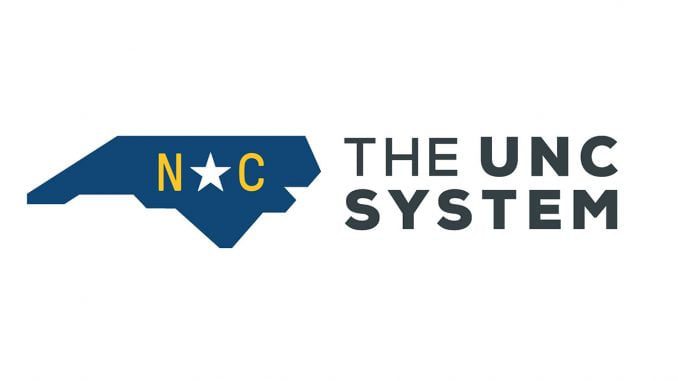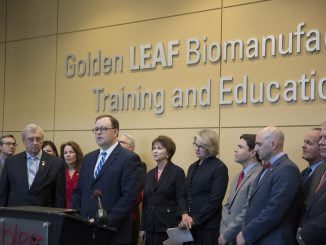
RALEIGH — The University of North Carolina System recently announced the second year of record-high enrollment numbers for its Fall 2019 semester.
“At a time when attendance at other universities is declining, our enrollment continues to break records,” said UNC System Interim President Bill Roper in a press release. “These numbers suggest that our work is having an impact. We are delivering unparalleled education that is more affordable and more accessible to more people.”
The University of North Carolina System (UNC) is made up of 17 institutions, 16 of which are the state’s public universities, as well as the NC School of Science and Mathematics, the nation’s first public residential high school for STEM education.
“The main trend in our system is growth and continued growth,” said Dr. Andrew Kelly, UNC System Senior Vice President for Strategy and Policy.
The UNC System has a current total enrollment of 239,987 which is 1.3 percent higher than last year’s record enrollment of 236,993. Undergraduate enrollment moved up 0.9 percent and graduate enrollment went up by 2.6 percent.
Kelly also said that the transfer student numbers over the last decade or so are “way up.”
“A lot more students are transferring into the UNC System from the community college system, which is where the majority of our transfer students come from, but also from other schools that transfer into our system,” Kelly said.
Kelly added that the 2014 Comprehensive Articulation Agreement made transfer of credit much easier for students.
On gender trends in enrollment, Kelly said that it has “been the case for quite a while” that more women than men are both enrolled in college and completing college.
For the first time since NCSU opened up to women in 1899, female enrollment (50.3%) has passed that of males in the current incoming class at North Carolina State University (NCSU) according to the school’s website.
Last year, NC State’s first-time degree-seeking undergrads had a ratio of roughly 51 percent men, 49 percent women. The only other school with more men than women in 2018 was UNC Charlotte.
Of the 2018 NCSU freshman class, 28 percent were women in the College of Engineering whereas ten years ago, it was only 18 percent. NCSU’s female enrollment is coming close to matching private universities in the region like Duke, whose class of 2022 was 52 percent female.
Historical enrollment data from the UNC System website shows a steady gain in students, including gains in the number of females enrolled.
Looking back over a decade to 2009, UNC enrollment stood at 55.8 percent female and 44.2 percent male. In 2018, female enrollment rose just over 3 points to 58.2percent and males dropped by the same amount to 41.8percent.
Most UNC System schools show the male-female percentages being fairly close to 50-50, female enrollment numbers slightly edging out males. Several schools had female enrollment well over 60percent like Winston-Salem State University, which had a 74percent female student population in 2018.
The UNC System attributes the record enrollment in part to improved system-wide student retention and passage of several bills by the Republican-held General Assembly that helps students to afford college.
One is a fixed tuition program for in-state students at UNC system schools. Another program is the legislature’s NC Promise Tuition Plan reduces costs at three specific UNC schools by dropping in-state tuition to $500 per semester and out-of-state tuition to $2,500 per semester.
UNC Pembroke, one of the NC Promise plan schools, cited a record 7,698 students enrolled this fall. That increase, a 7.9 percent uptick over the previous year, was the biggest gain in the UNC System followed by another NC Promise school, Elizabeth City State University, with a 5.7% increase.
Conversely, the largest enrollment drops were found at UNC Asheville at -4.3%, NC Central -2.4% and Winston-Salem -1.3%.
Kelly said that the majority of enrollment trends were positive, but that as an industry, higher education institutions are paying close attention to the “leveling off” in the number of students coming out of high schools.
“This is a phenomenon that has a lot to do with birth rates,” said Kelly. “As people have fewer children there are fewer students in the hopper or in the chute to graduate high school and attend a four year or two-year university.”
Unlike other areas of the country that have seen enrollment drops coinciding with smaller populations of college-aged students, North Carolina’s college-aged populations won’t decline for some time. That doesn’t mean the UNC System isn’t already looking ahead for ways to engage adults and military service members transitioning to civilian life.
“We are a huge destination for both active duty and veterans,” Kelly said. “Finding more ways to help those individuals get the skills and credentials they need to be successful is certainly on our radar screen of this system.”
Kelly also said they are looking at ways to expand online course options and digital learning and that both are an “ongoing topic of conversation.”



